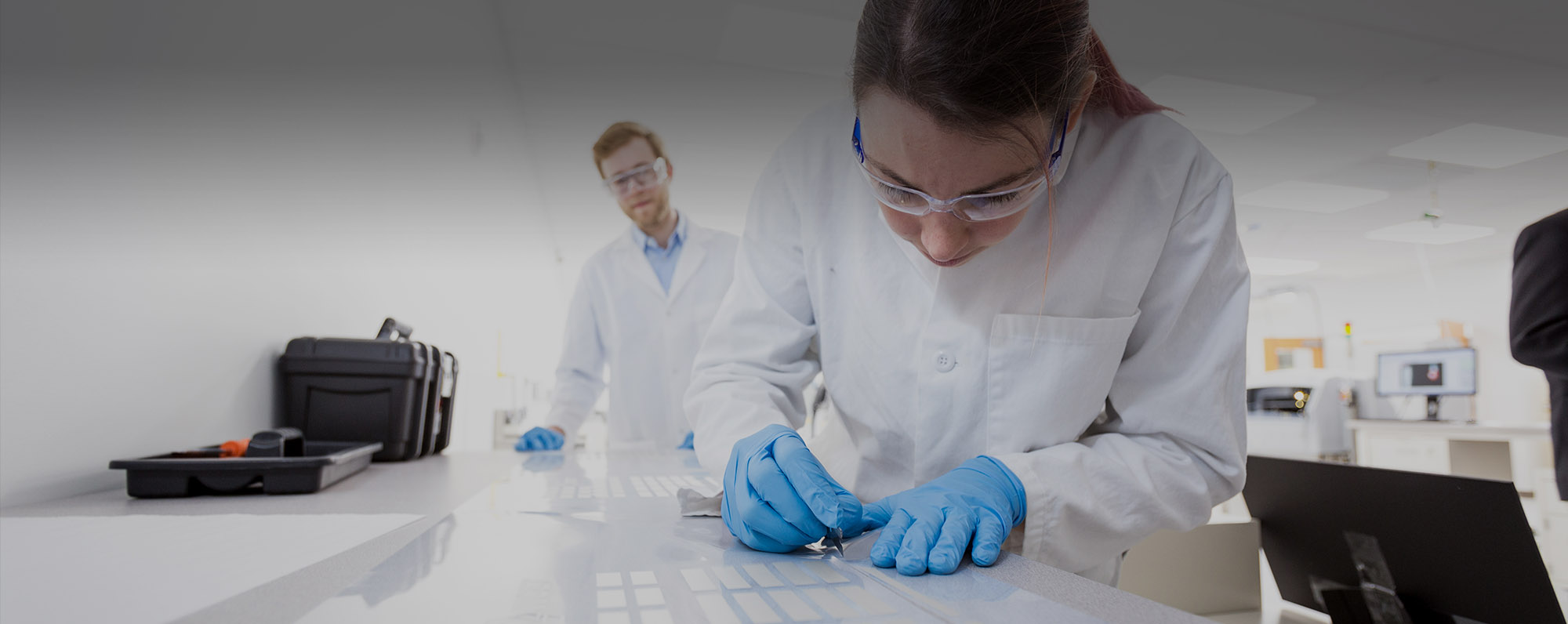Bubble Raft Crystal Model
In this demonstration / lab students use uniform bubbles floating on water to model the formation and organization of atoms in crystals (Bubleraft Lesson)
QUESTION
Can we use bubbles floating on water to model the organization of atoms forming a crystal?
Background
Self-assembly is the idea that particles can organize themselves into the complex structures with a high amount of order. Closely packed balls of the same size will eventually sort themselves into tightly packed rows that look like the atoms arranged in crystals. At the molecular level crystals form when atoms align themselves in the position with the lowest energy in response to layers of crystals already in place. It’s very hard to see crystals form at the nano-scale. You can see the macro effect of ordered solids in large crystals that mimic the geometry of their smallest. The bubble raft forms a sheet in which each bubble is drawn by surface tension to the closest position. This is analogous to the atomic forces which draw atoms into crystal formations. This model is most analogous to the structure of a metal formed of identical atoms.

Research Connection
Our researchers create nano-crystals which have interesting properties at the nanometer scale. Defects in the crystals can add to or detract from the useful properties of a nanocrystal.
NGSS Standards
| Standard Number | Standard text |
| MS-PS1-1 | Develop models to describe the atomic composition of simple molecules and extended structures. |
Materials
- Aquarium Pump
- Blunt Syringe Tips
- Valves
- Clear Tray
- Dish Soap
- Glycerin or Corn Syrup
Procedure
- Connect a blunt syringe to a hose to the aquarium pump and fix it to the side of plastic tray so that it sit near the bottom.
- Mix up a bubble solution with 2 cups hot water, ¼ cup dish soap and 2 tablespoons of glycerin.
- Fill the tray with soap solution to ½ inch from the top.
- Turn on the pump and regulate the pressure until you have steady stream of uniform small bubbles.
- Observe the pattern of bubbles. What crystal structures do you recognize
Discussion
- What happens if you mix bubbles of different size? There is no organization.
- What force is causing the bubbles to stick together? Surface tension around each bubble
- What is the effect of a defect caused by introducing a single larger bubble? Other bubbles have to adjust around the defect.
- Can you see crystal domains or grain boundaries? You may see portions of the bubble raft that aligned in one direction colliding with another set in another direction. This happens when crystals grow from more than one front at the same time and run into each other.
- Can you create an ordered lattice with more than one size of bubble? Very carefully create two sizes of bubbles right next to each other using two tips which produce two different size bubbles at the same time…
Extensions
Try making a time lapse movie of your bubble raft formation using the Lapse it smart phone app.



